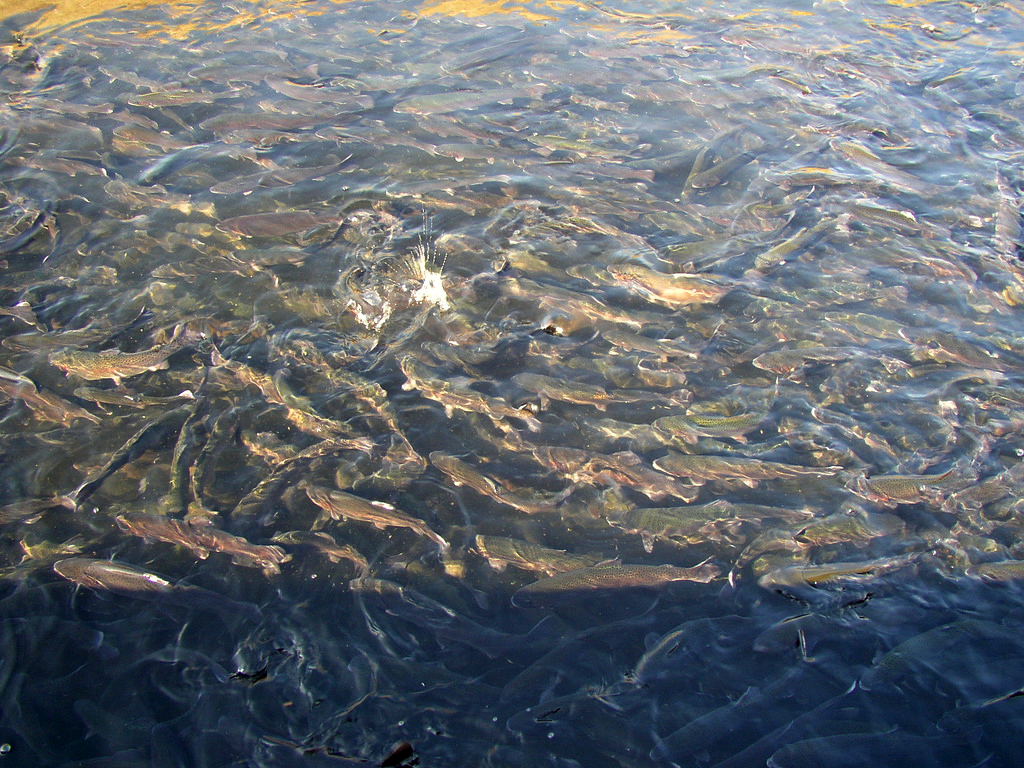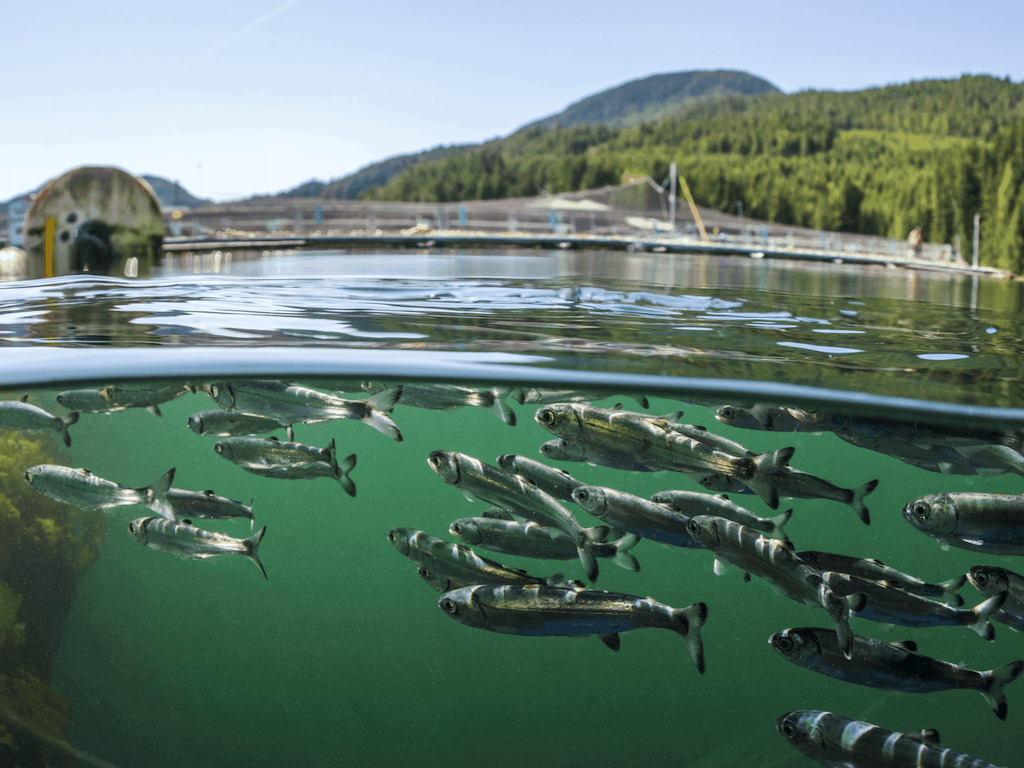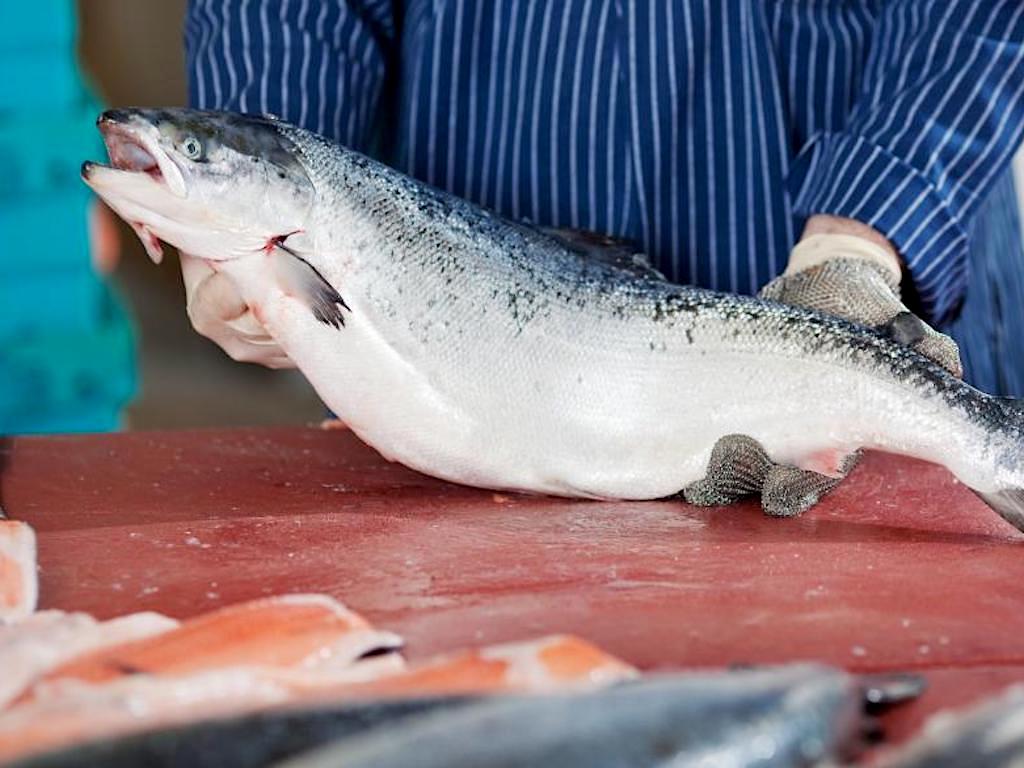4 Mins Read
Salmon aquaculture is leading to devastating consequences on our natural environment, from harming marine ecosystems via pollution, to the high stocking densities that are causing fish mortality rates skyrocket, leading to negative costs amounting to US$47 billion since 2013. Researchers say that these findings, published in a new report, should serve as a warning to governments, investors and farmers to transition into a more sustainable food system.
A new analysis of the global salmon farming industry conducted by research firm Just Economics for the nonprofit Changing Markets Foundation, is warning that unsustainable farming is leading to enormous losses, both financially and environmentally. The report, titled “Dead Loss”, reveals that salmon aquaculture has produced “negative externalities” worth in the region of US$47 billion between 2013 to 2019.
It highlights unsustainable practices such as the use of fish in feed, local pollution and inadequate fish welfare among the key drivers of the losses incurred, which have not been accounted for in previous estimates of the harm and damage the industry is responsible for.
“A combination of growing environmental impacts, consumer demand for ethical and environmentally-friendly products and direct losses from poor fish husbandry are creating long run economic risks to the industry,” wrote the researchers in a summary.

According to the report, fish mortality rates have more than quadrupled between 2002 to 2019 in Scottish farms alone, jumping from 3% to 13.5%. Scotland is among the world’s biggest salmon producers, alongside Chile, Norway and Canada. Around one fifth of the deaths recorded were attributable to sea lice infestations, which feed on the skin and mucus of salmon, eating them up alive.
A combination of growing environmental impacts, consumer demand for ethical and environmentally-friendly products and direct losses from poor fish husbandry are creating long run economic risks to the industry.
Just Economics
The use of fish as feed is also adding to the industry’s greenhouse gas emissions and contributing to overfishing in our already depleted oceans, with around a 20% of the world’s annual wild fish catch now being used to make fishmeal and fish oil – of which 70% is used by fish farms.
Overall, 60% of the cost burden falls on producers, especially in terms of treating aquaculture diseases and due to fish mortality, but a significant 40% of the costs have to be borne by the rest of society, who feel the impact of pollution, loss of ocean fish stocks and its impact in fuelling the climate crisis.
Researchers point out that with rising demand for salmon, the sector’s negative environmental impact and financial costs are expected to go up, unless drastic changes are made.
“Not only is it already the fastest growing food production sector in the world, but a continued global growth in demand is expected.” While Scotland is planning a doubling in its salmon production by 2030, Norway is aiming to increase its capacity by five-fold by 2050, said the report.
Recent trends also show demand is being fuelled by the shift people are making to lower their meat consumption, but are displacing it with fish instead, which will again alarmingly speed up the rate at which our oceans will be completely depleted and the other environmental harms of the industry, including the problem of bycatch and plastic pollution left behind by ghost nets.

Not only is it already the fastest growing food production sector in the world, but a continued global growth in demand is expected.
Just Economics
“Our recommendations focus on the four most significant stakeholders in salmon farming: governments, investors, farmers and consumers, each of which has a role to play in transitioning to a more sustainable aquaculture and food system.”
Some of the measures advised in the report include a switch from fish-based feed and fish oil to using algae as a source of Omega 3s, as well as tightening regulations on licensing for fish farms to enforce lower stocking density and improve transparency and traceability.
Other experts, not involved with the report, have also pointed to the critical need to shift to alternative food solutions, such as existing plant-based analogues and cultivated seafood products in the future. While cell-based seafood alternatives have yet to hit the market, a a growing number of plant-based products are already available, such as vegan tuna made by Good Catch Foods, Nestlé and Schouten, Ocean Hugger Foods’ unagi eel and plant-based shrimp developed by New Wave Foods.
Lead image courtesy of Shutterstock.




